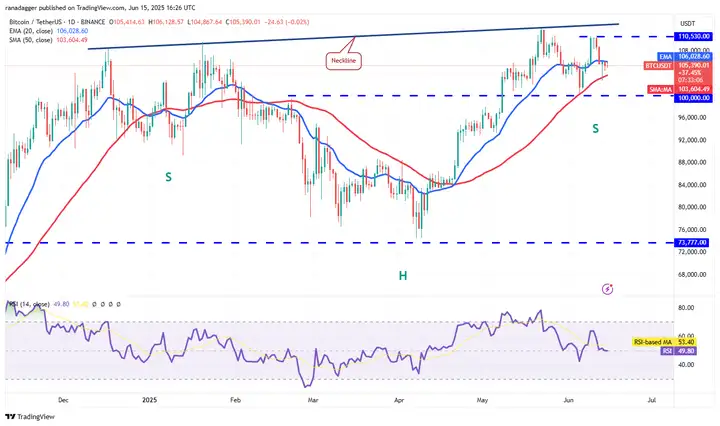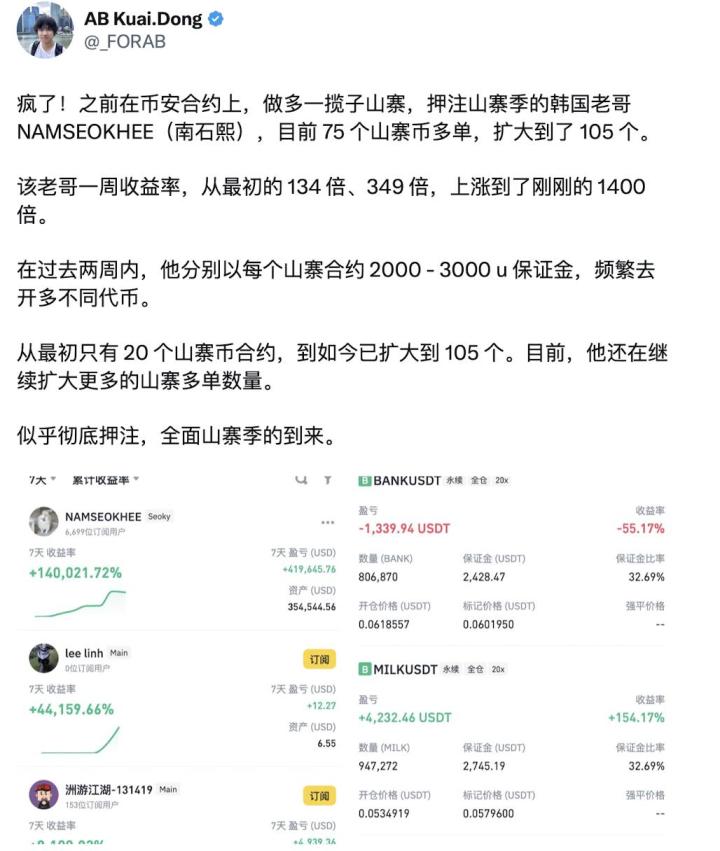Amid the China-US tariff war, real-world conflicts in the Middle East... Bitcoin demonstrates surprising stability at the $105,000 mark.
VX: TZ7971
Dual Support from Rate Cut Expectations and Inflation Relief
The certainty dividend of monetary policy shift is evident: the CME Federal Reserve tool shows a 68% probability of Q3 rate cuts, directly reflected in Bitcoin's futures term structure steepening: the June 15 futures contract's annualized premium rose to 23%, a new high since the 2024 halving. Historical data shows Bitcoin averages a 37% increase in the 3 months before a rate cut cycle, far exceeding gold's 12%.
Inflation Relief: The May core PCE price index year-on-year decline to 2.8%, and the Global Supply Chain Pressure Index (GSCPI) returning to pre-pandemic levels weakens Bitcoin's anti-inflation narrative while unexpectedly releasing its "growth-sensitive asset" attribute. MicroStrategy's latest financial report shows the accounting for Bitcoin holdings shifting from "intangible assets" to "strategic reserves", marking institutions' integration into growth stock valuation frameworks.
Short-Term Price Analysis
Bitcoin found support at the 50-day simple moving average ($103,604) on Friday, but bulls struggled to push prices above the 20-day exponential moving average ($106,028). This indicates a lack of buying pressure at higher levels.

According to the BTC/USDT daily chart, the 20-day moving average is flattening, and the Relative Strength Index (RSI) is near the midpoint, providing no clear advantage to bulls or bears. If buyers push prices above the 20-day moving average, BTC/USDT could climb to the $110,530-$111,980 range. Sellers are expected to defend this upper area, but if bulls prevail, the pair could surge to $130,000.
Future Path: Summer Hibernation and Autumn Offensive
June-August: Oscillation Accumulation Period
The Federal Reserve's policy vacuum might cause Bitcoin to oscillate between $98,000-$112,000. Key focus will be the July FOMC meeting's potential rate cut signals, with the 200-day moving average ($96,500) providing strong support. Geopolitical conflict pulse effects remain present.
September-November: Primary Upward Wave Initiation
Historical seasonal patterns show October averaging a 21.89% increase. Combined with potential first Fed rate cuts, Bitcoin might embark on a journey to breach $150,000. The US debt maturity peak ($6.5 trillion) might force the Fed to expand its balance sheet, with a second liquidity release as the best catalyst. Options markets have accumulated numerous December expiry call options with a $140,000 strike price.
Long-term, spot ETF routine approvals will attract over $200 billion in traditional asset management funds. Caution is advised for potential "Christmas correction" after November's high, with historical data showing an average 18% pullback in bull market cycles.
Today's fear index is 61, still in a greedy state.
Don't panic about potential declines, boldly add positions. Look, it's about to rebound, especially without any positive news. With a major positive catalyst, it could directly break to new highs.
Currently, whale and retail address inflows on Binance for Bitcoin have dropped to historic lows, indicating both groups prefer holding, with further upside potential. Tuesday's retail sales data, Wednesday's unemployment claims, and Thursday's early morning Federal Reserve meeting results are expected to maintain current rates. We'll wait and see what Powell says, whether he'll lean dovish and signal rate cut expectations.






